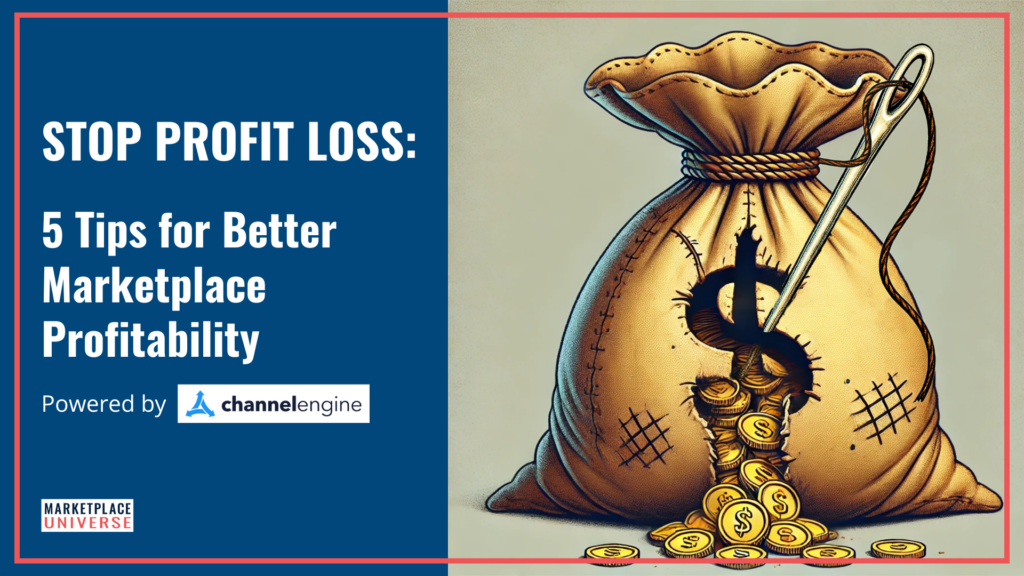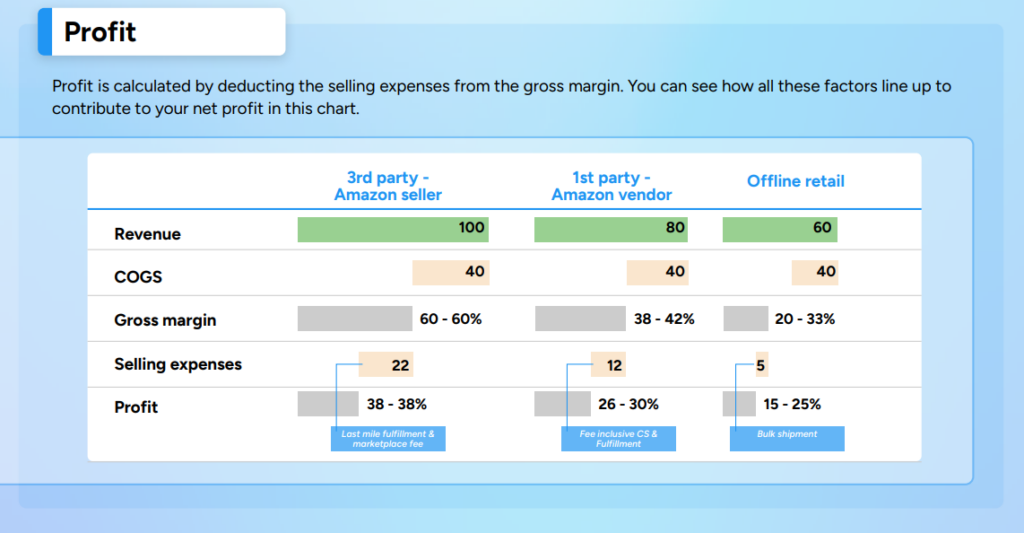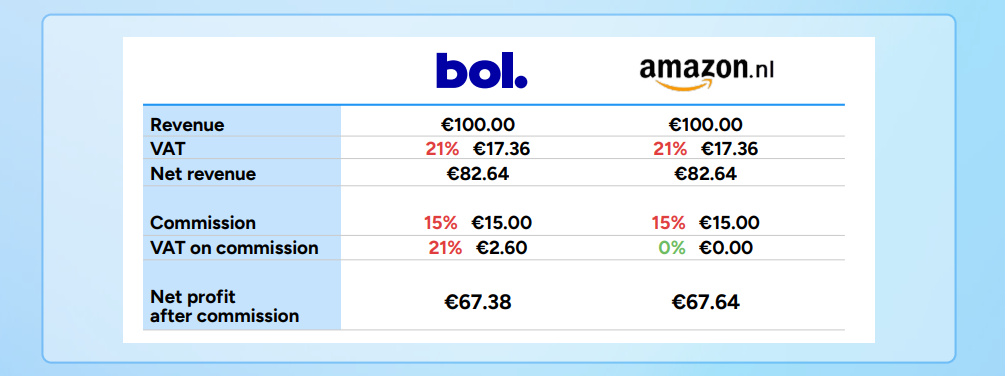
Profitability has been one of the most important topics for brands and retailers over the past 12 months – and it will continue to be a key focus. Selling on marketplaces, however, often makes it tricky to understand what actually remains at the end of the day. When brands operate across multiple platforms, they need reliable and comparable data to identify cost traps. Only then can they develop a strategy for improving profitability. Together with our partner ChannelEngine, we’ve put together 5 tips for better marketplace profitability.
One of the reasons why comparable figures are hard to obtain is that marketplace costs are made up of many different elements. These include one-off costs such as setup fees or expenses for complying with legal requirements, as well as fixed and variable fees that vary from one marketplace to another.
Here’s an overview:

Marketplace fees generally include a fixed monthly fee as well as variable fees like sales commissions. If the platform uses its own payment gateway, payment processing fees may also apply.
If you’re using a middleware solution – which is highly recommended when managing multiple marketplaces – this also generates costs. These typically consist of a mix of one-time onboarding fees, software licenses, monthly charges, and commissions on GMV.
Logistics costs include expenses for inbound stock, warehousing, and shipping. Additional costs may occur for insurance and inventory holding. One of the most underestimated profit killers is returns.
Monitoring your return rate, analyzing the root causes (such as issues with product descriptions, sizing information, or product quality), and addressing them is essential for long-term success.
Tip 1: Master Your Costs – Right Down to the SKU Level
Profitability on marketplaces isn’t just about selling more – it’s about knowing exactly what each product costs you to sell. That means digging deep into both variable and fixed costs: marketplace commissions, middleware fees, pick & pack, shipping, returns handling, and even storage fees.
Don’t rely on averages. Instead, calculate the contribution margin per SKU and per channel. This allows you to see the real profit behind each item, especially since costs vary widely depending on the product type and the marketplace setup.
By understanding your true unit economics, you can:
– Price products with confidence
– Remove unprofitable SKUs from your assortment
– Focus on what actually drives profit
Precision = Profit. And SKU-level data is where it starts.

Tip 2: Choose the Right Selling Model for Profit, Not Just Reach
Your marketplace revenue might look good on paper—but how much of it actually turns into profit depends on your selling model. A 3P (third-party) model gives you full revenue control, but also means handling all costs. A 1P (vendor) model reduces your margin share but includes services like fulfillment and customer support.
Always analyze net profit after selling expenses—not just top-line sales. Factor in your cost of goods sold (COGS), shipping, fees, and any service costs. Sometimes, a model with lower revenue can bring higher actual profit.
Don’t just ask “How much do we sell?”—ask “How much do we keep?”

Tip 3: Turn Low-Margin Products into Profit Machines
Low-price items don’t have to kill your margins—bundle them smartly. Use multipacks or virtual bundles to increase Average Order Value (AOV) and spread fixed costs (like shipping and handling) across more revenue.
For example, selling 3 pairs of socks together instead of one increases your contribution margin per item significantly. Even better, virtual bundles can be created automatically using basket data – no extra stock allocation needed.
More items per order = higher profit per parcel.

Tip 4: Set Minimum Prices to Protect Your Margins
Profitability starts with the right pricing floor. Calculate a minimum price per SKU and channel that covers all your costs—COGS, commissions, VAT, fulfillment, and returns—and still delivers your target profit.
Use this minimum as a base, then apply smart repricing tools to stay competitive without slipping into unprofitability. Dynamic pricing helps you stay agile during campaigns or promotions—while your profit stays safe.
Minimum price = your profitability safety net.

Tip 5: Don’t Be Afraid to Ditch Unprofitable Products
Not every SKU deserves a spot in your marketplace lineup. If an item consistently erodes your margin due to high return rates, low order value, or excessive handling costs—cut it.
Use contribution margin analysis to identify weak performers. If bundling or repricing doesn’t help, it’s better to remove the product and focus on higher-margin SKUs that actually grow your profit.
Trimming your assortment = boosting your bottom line.
Conclusion
Marketplace success isn’t just about sales – it’s about sustainable profit. Focus on precise cost tracking, smart pricing, and cutting unprofitable SKUs to build a marketplace strategy that truly pays off. Are these 5 tips for better marketplace profitability helpful? Then take a look at the ChannelEngine eBook: Download it right here!